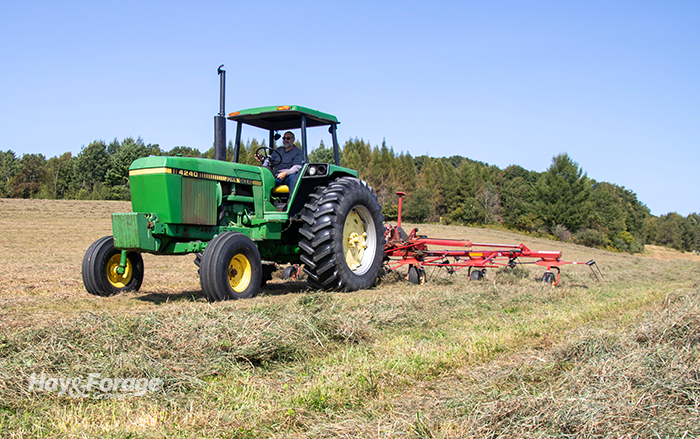
I’m usually the one posing questions to farmers, but I recently found myself on the receiving end of such an exchange. The conversation led me to consider one step of the haymaking process that seems to get less attention than others.
Although not a haymaker by trade, this farmer rented a new crop field this year that came with a 20-acre hayfield attached to it. Instead of terminating the stand to make room for more corn and soybeans, they decided to keep it in production and bale hay for the neighbor’s beef cattle.
With row-crop planting squared away and a first hay cutting fast approaching, the farmer switched gears to ready his mower, rake, and baler. But one piece of haying equipment remained to be spoken for — the tedder.
Their question for me: Is it necessary to ted hay? My answer for them: It depends.
Sunlight and airflow
Tedding hay is an additional step to help speed up dry down. It has historically been more common for grass hay in the northeastern U.S. where the humid continental climate thwarts efficient drying. With that said, it’s not unusual for Midwestern farmers to ted hay, although their approach may be more touch-and-go depending on drying conditions and the seven-day forecast.
Tedder tines lift and disperse forage across a wider area than the swath it was laid in by the mower. This promotes airflow and helps maximize sunlight interception by cut forage, capturing solar energy that would otherwise be wasted on crop stubble and exposed soil. Out of the primary factors of hay drying — solar radiation intensity, air temperature, relative humidity, wind speed, and soil moisture — solar radiation intensity has the greatest impact.
Solar radiation activates and opens stomates, which are essentially the exit doors for plant moisture. Therefore, as tedding hay creates a larger surface area of cut forage, more stomates are exposed to sunlight and more water is able to escape plants. Tedding also inverts the bottom layer of forage to the top, allowing for more even drying throughout the field and creating more consistent bales.
This mechanical manipulation can have some consequences, though, especially for legume hay. Alfalfa, in particular, is more subject to leaf shatter and leaf loss when tedded, and this can be exacerbated if forage is too dry. Tedding is generally less popular for alfalfa hay production.
Grass hay, on the other hand, is more tolerant of tedding since leaves are more securely attached to plant stems. Grass hay is also more likely to mat and requires a longer drying time than alfalfa, making tedding even more of a necessity.
It is generally recommended to ted hay several hours after cutting or early in the morning on the days following harvest. This allows some time for initial dry down while ensuring forage moisture is adequate and leaves are hydrated enough to limit loss.
An extra pass
The expenses associated with an extra pass through the field may be another deterrent, especially if farmers don’t own a tedder and have to rent one. However, those costs may be justified if tedding hay will get it moved off the field before it rains. In some cases, tedding hay can shave days off of curing time.
If impending weather is the primary threat, the trade-off ultimately comes down to losing dry matter and quality to rained-on hay or spending more time and fuel to ted hay and sacrificing some leaf loss. In some cases, the value of the nutrients lost might outweigh the added costs. In other cases, the opposite may be true.
If tedding is a part of your process, make sure your machine aligns with your forage species, harvest capacity, and mower design. Tedder tines can influence machine performance, maintenance, and hay drying. Don’t exceed the manufacturer’s recommendations for ground speed and revolutions per minute (RPM), as this can result in hay bunching up and getting wrapped around equipment.
Long story short, when deciding whether to ted hay, it will depend on the situation. Consider the forage, consider the weather, and consider the trade-offs that come with the tedder.
